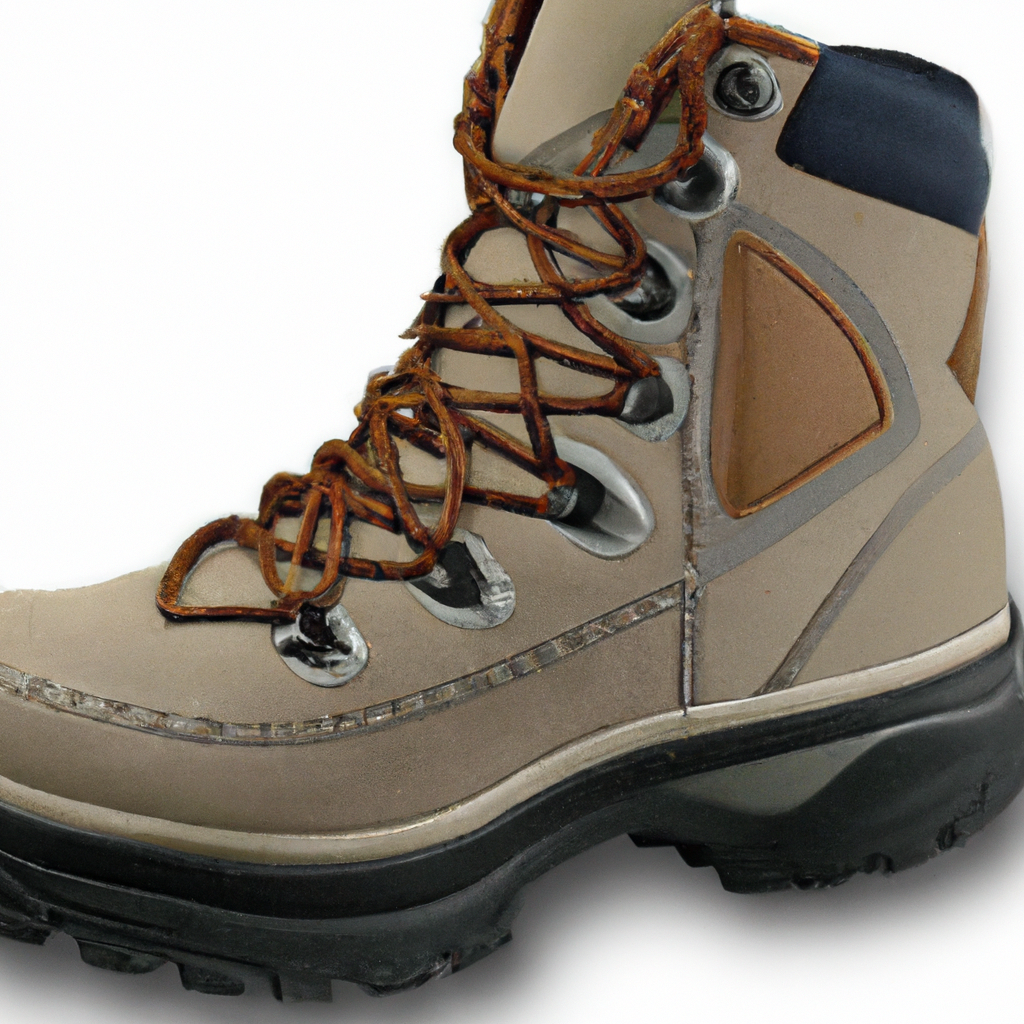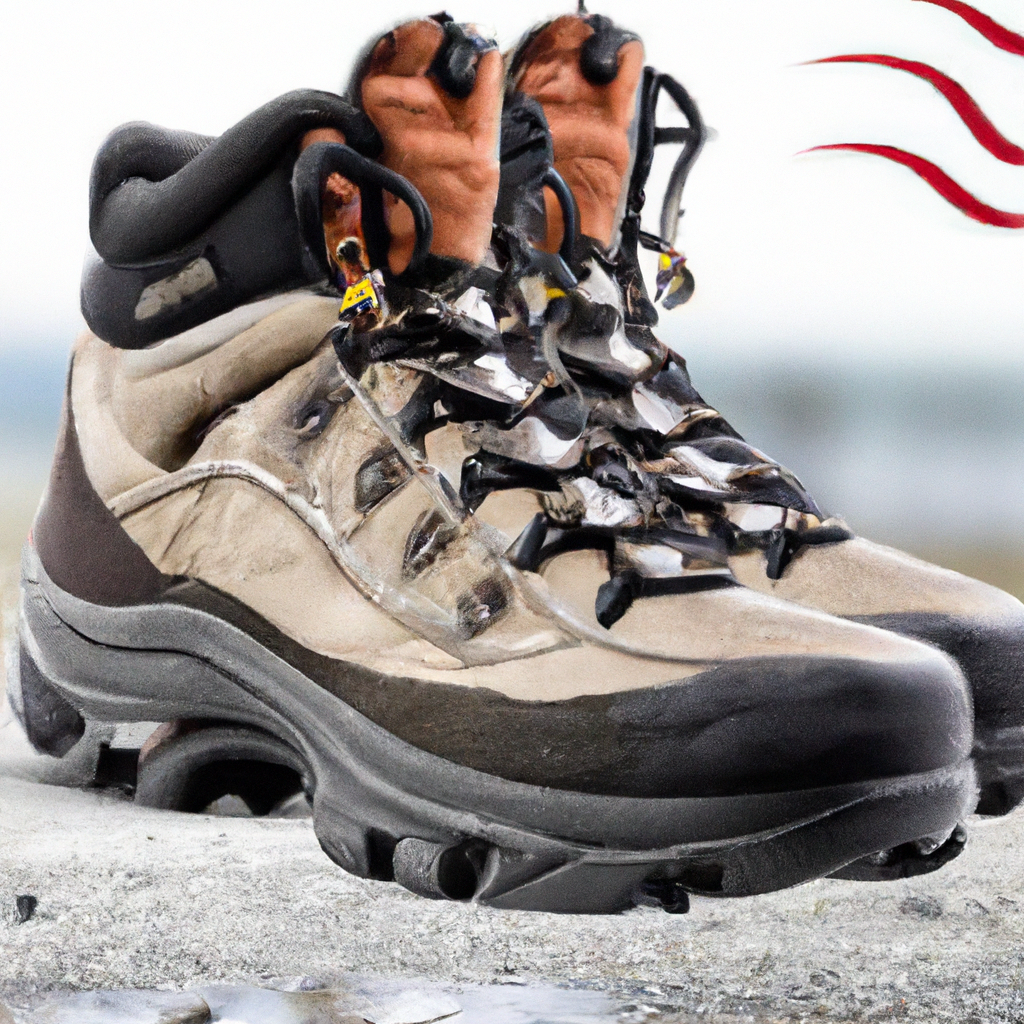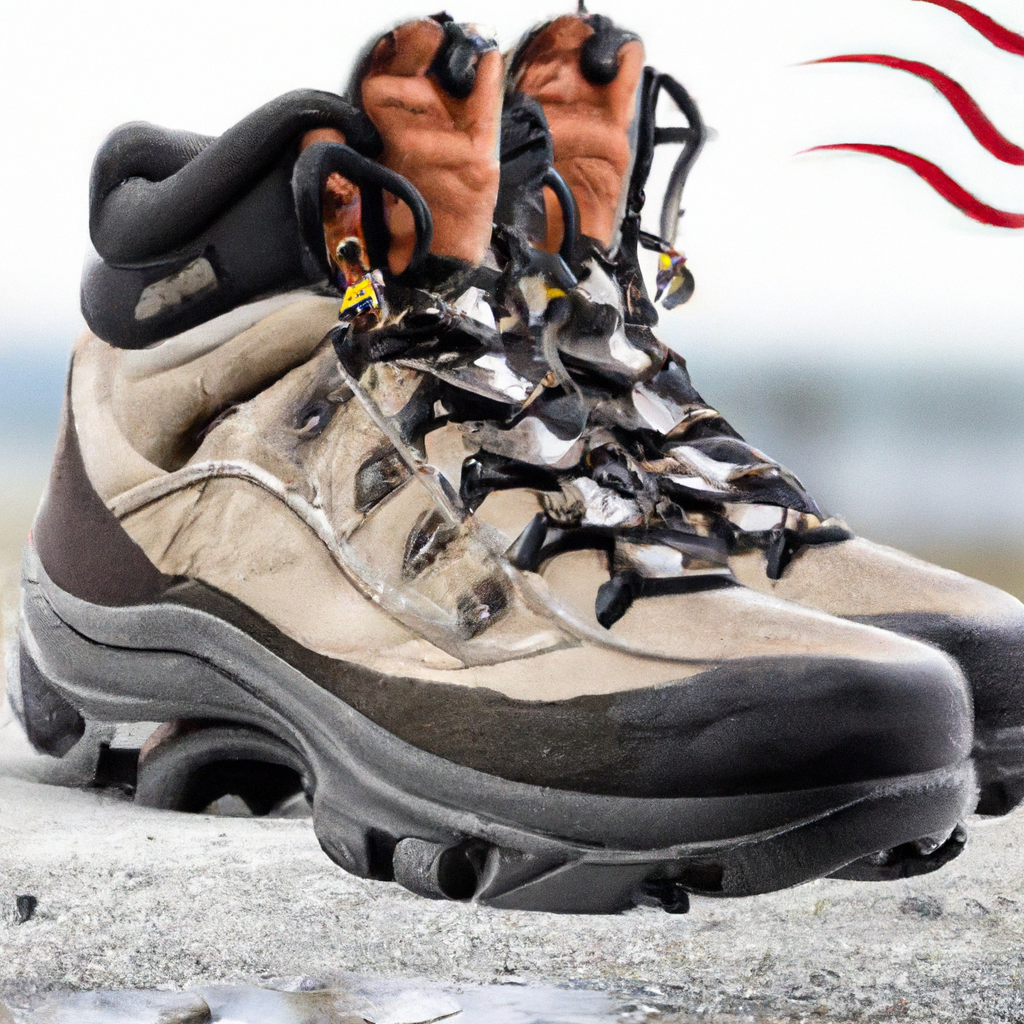Looking to buy a pair of lineman boots but not sure what to look for? Look no further! In this article, we will explore the top features that you should consider when purchasing lineman boots. From the importance of electrical hazard protection to the benefits of a steel shank, we’ve got you covered. So, whether you’re a seasoned lineman or just starting out, keep reading to discover the must-have features that will keep your feet protected and comfortable while on the job.

Durability
When it comes to lineman boots, durability is an essential factor to consider. After all, you want a pair of boots that can withstand the rigorous demands of your job and provide long-lasting performance. The following features contribute to the overall durability of lineman boots.
High-quality materials
One of the most crucial aspects of durability is the use of high-quality materials. Look for boots made from sturdy and durable materials, such as full-grain leather. Full-grain leather is known for its durability and ability to resist wear and tear. It also offers excellent resistance to water, oils, and chemicals, making it ideal for lineman work.
Reinforced toe and heel
The toe and heel areas of lineman boots are prone to abrasions and impacts. Therefore, it is crucial to choose boots that have reinforced toe and heel areas. Reinforcements, such as steel or composite toe caps, provide additional protection against falling objects and compression. They act as a shield for your feet, ensuring that you stay safe and your boots remain intact even under challenging conditions.
Stitching and construction
The stitching and construction of lineman boots play a significant role in their durability. Look for boots that boast double or triple stitching along the seams. This type of stitching provides additional strength and prevents the boot from unraveling or falling apart. Additionally, pay attention to the construction of the boots. Go for boots that feature a Goodyear welt construction, as it is known for its durability and ability to withstand heavy use.
Waterproofing
As a lineman, you often find yourself working in wet and muddy conditions. Therefore, having waterproof boots is essential to keep your feet dry and comfortable throughout the day. Look for boots that have features like leather uppers and waterproof membranes. Leather uppers repel water, while waterproof membranes create a barrier that prevents water from seeping into the boots. Sealed seams are another crucial feature to consider, as they prevent water from creeping in through the stitching.
Safety
Safety should always be a top priority, especially when working in hazardous environments as a lineman. When selecting lineman boots, keep the following safety features in mind.
Electrical hazard protection
Working with electricity poses significant risks, and lineman boots should provide adequate protection against electrical hazards. Look for boots that meet electrical hazard (EH) standards, meaning they are designed to provide a secondary source of protection against electric shock. EH boots have non-conductive soles that help dissipate the electrical charge and reduce the risk of electrical accidents.
Steel toe cap
Accidents involving falling objects are a common occurrence in lineman work. To protect your toes from potential injuries, opt for boots with a steel toe cap. Steel toe caps provide excellent protection against falling or heavy objects by absorbing the impact and dispersing it across the toe area. They act as a protective barrier for your toes, reducing the risk of fractures or crushing injuries.
Slip resistance
Linemen often work on slippery surfaces, such as utility poles or roofs. Having boots with slip-resistant soles can prevent dangerous slips and falls. Look for boots that feature rubber outsoles with specialized tread patterns designed to provide maximum grip. These outsoles offer excellent traction, ensuring that you can confidently navigate various terrains without compromising your safety.
Shock absorption
The nature of lineman work involves constant impact and stress on your feet and joints. To prevent excessive strain, choose boots with shock-absorbing properties. These boots have built-in cushioning systems, such as EVA (ethylene-vinyl acetate) or PU (polyurethane) midsoles, that absorb and dissipate shock. This not only protects your feet from impact-related injuries but also enhances overall comfort during long hours of work.
Comfort
Comfort is a crucial aspect to consider when purchasing lineman boots. To perform your tasks efficiently and effectively, you need boots that keep your feet comfortable throughout the day. Here are some features to look for in terms of comfort.
Arch support
Lineman work often involves standing for long periods, which can cause foot fatigue and discomfort. Therefore, it is essential to choose boots that offer excellent arch support. Look for boots with built-in arch support systems, such as cushioned footbeds or removable insoles. These features help distribute your body weight evenly and reduce strain on your arches, providing all-day comfort.
Cushioning
Comfortable boots should have sufficient cushioning to absorb the impact and soften the pressure on your feet. Look for boots with cushioned insoles or midsoles made from materials like EVA or PU. These materials offer excellent shock absorption and provide a cushioned layer between your feet and the ground. The added padding not only enhances comfort but also helps reduce the risk of foot fatigue and injuries.
Breathability
Working long hours in your lineman boots can cause your feet to become sweaty and uncomfortable. To combat this, choose boots that offer good breathability. Look for boots with moisture-wicking linings or breathable mesh panels. These features allow proper airflow, preventing excessive sweating and odors. Boots with breathable materials help keep your feet cool and dry, ensuring maximum comfort throughout the day.
Flexible outsole
Having boots with a flexible outsole is essential for the natural movement of your feet. Look for boots that have outsoles made from rubber or other flexible materials. These outsoles provide excellent flexibility, allowing your feet to move freely and naturally. Boots with flexible outsoles also enhance your overall comfort by reducing the strain on your feet and preventing stiffness or discomfort.
Fit
Finding the right fit is crucial when it comes to lineman boots. Ill-fitting boots can cause discomfort, reduce your productivity, and even lead to foot problems. Consider the following aspects to ensure a proper fit.
Proper sizing
Choosing the correct size is the first step to finding a well-fitting pair of lineman boots. Take accurate measurements of your feet and consult the manufacturer’s size chart to determine the appropriate size. It is important to note that sizes can vary between brands, so it’s essential to refer to specific brand sizing guidelines. Ensure that your boots fit snugly but not too tight, as this can cause rubbing or blisters.
Adjustable closures
Having boots with adjustable closures can help achieve a customized fit. Look for boots that feature laces, straps, or buckles that can be adjusted to your preference. Adjustable closures allow you to tighten or loosen the boots to your desired level of comfort and support. They also provide a secure fit that prevents the boots from slipping or rubbing against your feet during work.
Ankle support
Lineman work often involves climbing poles or ladders, which puts significant strain on your ankles. To ensure proper ankle support, choose boots that offer ankle support features. Look for boots with padded ankle areas or boots that rise higher on your ankle for added stability. Proper ankle support helps prevent sprains or injuries while providing a secure and comfortable fit.

Support
Working as a lineman requires boots that provide adequate support to handle the physical demands of the job. Here are some key support features to consider when selecting lineman boots.
Ankle support
Ankle support is crucial for maintaining stability and preventing injuries when working in high-risk environments. Look for boots that have structured ankle collars or padded ankle areas. These features provide stability and support around the ankle joint, reducing the risk of twists or sprains. Well-supported ankles help you maintain balance and perform your tasks with confidence.
Shank
A shank is a supportive structure located between the insole and outsole of the boot. It plays a vital role in providing stability and support to the arch of your foot. Look for boots with a shank that matches your specific needs. A steel shank offers excellent arch support and stability, while a fiberglass shank provides flexibility and reduces foot fatigue. The right shank ensures proper weight distribution and prevents arch pain or discomfort.
Heel stability
Heel stability is essential for maintaining balance and preventing ankle or foot injuries. Look for boots that have a stable heel counter, which is a stiff material that encases the back of the foot. The heel counter provides support and prevents excessive movement, reducing the risk of twists or strains. A stable heel promotes proper foot alignment and improves overall stability during work.
Midsole stability
The midsole is the layer between the outsole and insole of the boot, and it plays a crucial role in providing cushioning and stability. Look for boots that have a stable midsole made from materials like EVA or polyurethane. These materials offer excellent shock absorption and provide a stable base for your feet. A stable midsole enhances support, reduces fatigue, and ensures a comfortable and secure fit.
Waterproofing
As a lineman, you often encounter wet and rainy conditions. Having boots with effective waterproofing features is essential to keep your feet dry and comfortable. Consider the following waterproofing features when selecting your lineman boots.
Leather uppers
Boots with leather uppers offer natural water resistance due to the dense structure of the leather. Look for boots made from high-quality, full-grain leather. Full-grain leather is known for its durability and ability to resist water. It repels water and prevents it from seeping into the boots, keeping your feet dry even in wet conditions. Regularly treating the leather with a waterproofing agent can further enhance its water resistance.
Waterproof membranes
Many lineman boots incorporate waterproof membranes into their design to provide additional protection against water penetration. These membranes are typically made of breathable materials that allow moisture to escape while preventing water from entering the boots. Look for boots with waterproof membranes such as Gore-Tex or Hydromax. These membranes keep your feet dry by creating a barrier that blocks water molecules while allowing vapor to escape.
Sealed seams
Boots with sealed seams offer enhanced waterproofing by preventing water from entering through the stitching. Look for boots that feature heat-sealed or vulcanized seams. These types of seams are fused together, creating a watertight seal. Sealed seams ensure that water cannot seep into the boots, keeping your feet dry and comfortable, even in the wettest conditions.
Insulation
If you work in cold environments or during the winter months, insulation is a crucial feature to consider in your lineman boots. Adequate insulation keeps your feet warm and comfortable, allowing you to focus on your tasks without worrying about the cold. Consider the following insulation options for lineman boots.
Thinsulate lining
Boots with Thinsulate lining offer excellent insulation without adding excessive bulk. Thinsulate is a lightweight and compact synthetic insulation material that provides excellent warmth. It traps air molecules to retain heat while allowing moisture to escape, ensuring that your feet stay dry and cozy in cold conditions. Look for boots with varying levels of Thinsulate lining to match the temperature range you will be working in.
Thermal socks
Pairing your lineman boots with thermal socks can provide an extra layer of insulation for maximum warmth. Thermal socks are typically thicker and made from materials that retain heat, such as merino wool or synthetic blends. They provide additional insulation by trapping warm air around your feet and preventing heat loss. Investing in a good pair of thermal socks can greatly enhance the insulation properties of your boots, keeping your feet comfortably warm in even the coldest temperatures.
Extra insulation for cold environments
If you work in extremely cold environments or during sub-zero temperatures, consider boots with additional insulation features. Some boots come with removable liners or extra layers of insulation that can be added or removed based on the weather conditions. These boots offer versatility and allow you to adjust the insulation level to match your specific needs. Insulated lineman boots ensure that your feet stay warm and protected, enabling you to focus on your work rather than the cold.
Outsole
The outsole of your lineman boots plays a crucial role in providing traction and protecting you from various hazards on the job. Consider the following factors when evaluating the outsole of your boots.
Oil and slip resistance
Working as a lineman often involves encountering slippery surfaces, which can pose significant risks. Look for boots with oil and slip-resistant outsoles. These outsoles are specially designed to provide maximum grip and prevent slips and falls. The rubber compound used in these outsoles is formulated to repel oils and offer excellent traction on both wet and dry surfaces. Oil and slip resistance ensure that you can confidently navigate various terrains without compromising your safety.
Traction
Traction is essential for maintaining stability and preventing accidents in challenging work environments. Look for boots that have aggressive tread patterns on the outsole. The deep lugs and patterns on the outsole provide excellent traction on uneven and slippery surfaces, ensuring a firm grip at all times. Boots with superior traction give you the confidence to tackle any surface safely, reducing the risk of slips and falls.
Self-cleaning
Working in muddy or dirty conditions can quickly clog the treads of your boots, affecting traction and overall performance. Look for boots with self-cleaning outsoles. These outsoles have designs that shed mud and debris as you walk, keeping the treads clear and maintaining excellent traction. Self-cleaning outsoles not only ensure effective grip but also make cleaning and maintenance easier, saving you time and effort.
Heat resistance
In certain lineman work situations, exposure to heat or open flames is a potential hazard. It is essential to have boots that can withstand high temperatures. Look for boots with heat-resistant outsoles made from durable rubber or other heat-resistant materials. These outsoles can withstand high temperatures without melting or deforming, providing protection and ensuring your safety in heat-intensive work environments.
Toe Protection
Protecting your toes from impact and compression is crucial in lineman work, as falling objects and heavy equipment are common hazards. Consider the following toe protection options when selecting boots for your needs.
Steel toe cap
Steel toe caps are the most traditional and widely recognized form of toe protection. Look for boots with steel toe caps that meet safety standards and provide reliable protection against falling objects or compression. Steel toe caps are known for their exceptional strength and ability to withstand heavy impacts. They shield your toes from potential injuries and provide peace of mind in hazardous work environments.
Composite toe cap
Composite toe caps offer a lightweight and non-metallic alternative to steel toe caps. Look for boots with composite toe caps that meet safety standards and provide optimal protection. Composite toe caps are typically made from materials like carbon fiber or kevlar, which are known for their strength and impact resistance. These toe caps offer similar protection to steel toe caps but are lighter and do not conduct heat or cold, providing added comfort in various weather conditions.
Price
When it comes to purchasing lineman boots, it’s important to consider the price and the value for money. While high-quality boots may come with a higher price tag, they are often worth the investment due to their long-term durability and enhanced features. Consider the following factors when evaluating the price of lineman boots:
High-quality boots may be worth the investment
Lineman work requires boots that can withstand challenging conditions and provide long-lasting performance. Investing in high-quality boots may initially cost more but can save you money in the long run. High-quality boots are often made from premium materials and are built to withstand the rigors of your job. They offer superior durability, comfort, and safety features, ensuring that you can rely on them for an extended period. Consider the long-term value and durability when evaluating the price of lineman boots.
Consider long-term durability and value for money
When assessing the price of lineman boots, it’s essential to take into account their long-term durability and value for money. Cheaper boots may have a lower upfront cost, but they may lack the necessary features and durability required for lineman work. They may wear out quickly, necessitating frequent replacements and ultimately costing you more in the long run. On the other hand, investing in a pair of high-quality boots may require a higher initial investment, but they are likely to last longer and provide better overall value. Consider the long-term benefits and choose boots that offer the best combination of features, durability, and price.
In conclusion, choosing the right pair of lineman boots is essential for ensuring your safety, comfort, and performance on the job. Consider the features discussed above, such as durability, safety, comfort, fit, support, waterproofing, insulation, outsole, toe protection, and price, to make an informed decision. By selecting boots that excel in these areas, you can work with confidence and peace of mind knowing that your feet are well-protected and supported.




